- Home
- Raymond Chandler
The Annotated Big Sleep
The Annotated Big Sleep Read online
THE ANNOTATED BIG SLEEP
Annotated and Edited, with an Introduction, by Owen Hill, Pamela Jackson, and Anthony Dean Rizzuto
RAYMOND CHANDLER (1888–1959) turned to writing fiction at the age of forty-five, after a career as an oil executive. He published his first story in Black Mask in 1933 and his first novel, The Big Sleep, in 1939. Over his lifetime, Chandler wrote seven novels, several screenplays, and numerous short stories and became the master practitioner of American hard-boiled crime fiction.
OWEN HILL is the author of two mystery novels, a book of short fiction, and several books of poetry. He has reviewed crime novels for the Los Angeles Times and the East Bay Express. In 2005 he was awarded the Howard Moss residency for poetry at Yaddo. He is currently coediting the Berkeley Noir anthology, forthcoming in 2020. He works at Moe’s Books in Berkeley.
PAMELA JACKSON is an editor, a scholar, and a librarian specializing in California literary and cultural history. She holds a PhD from UC Berkeley and an MLIS from UCLA and was coeditor, with Jonathan Lethem, of The Exegesis of Philip K. Dick.
ANTHONY DEAN RIZZUTO is a professor of English at Sonoma State University, where he teaches (among other things) California ethnic literature and hard-boiled fiction. He is also a bookseller at Moe’s Books in Berkeley. He received his PhD from the University of Virginia.
A VINTAGE CRIME/BLACK LIZARD ORIGINAL, JULY 2018
Annotations and introduction copyright © 2018 by Owen Hill, Pamela Jackson, and Anthony Dean Rizzuto
Foreword copyright © 2018 by Jonathan Lethem
The Big Sleep copyright © 1939 by Raymond Chandler, renewed 1966 by Mrs. Helga Greene
All rights reserved. Published in the United States by Vintage Books, a division of Penguin Random House LLC, New York, and distributed in Canada by Random House of Canada, a division of Penguin Random House Canada Limited, Toronto.
Vintage is a registered trademark and Vintage Crime/Black Lizard and colophon are trademarks of Penguin Random House LLC.
Due to limitations of space, permissions to reprint previously published material can be found following the bibliography.
Library of Congress Cataloging-in-Publication data
Names: Chandler, Raymond, 1888–1959, author. | Hill, Owen, editor. | Jackson, Pamela (Pamela Renee), editor. | Rizzuto, Anthony, editor. | Lethem, Jonathan, writer of foreword.
Title: The annotated big sleep / Raymond Chandler ; annotated and edited, with an introduction, by Owen Hill, Pamela Jackson, and Anthony Rizzuto ; with a foreword by Jonathan Lethem.
Other titles: Big sleep
Description: New York : Vintage Crime/Black Lizard, [2017] | Identifiers: LCCN 2018019733 (print) | LCCN 2018023464 (ebook)
Subjects: LCSH: Marlowe, Philip (Fictitious character)—Fiction. | Private investigators—California—Los Angeles—Fiction. | BISAC: LITERARY CRITICISM / Mystery & Detective. | LITERARY CRITICISM / American / General. | PERFORMING ARTS / Film & Video / History & Criticism. | GSAFD: Mystery fiction.
Classification: LCC PS3505.H3224 (ebook) | LCC PS3505.H3224 B5 2018 (print) | DDC 813/.52—dc23
LC record available at https://lccn.loc.gov/2018019733
Vintage Crime/Black Lizard Trade Paperback ISBN: 9780804168885
Ebook ISBN 9780804168892
Cover design by Perry De La Vega
Cover photograph: Night view of downtown Los Angeles from city hall, Los Angeles, CA, 1931 by Dick Whittington, courtesy of University of Southern California Libraries
www.blacklizardcrime.com
v5.3.1
a
To Leigh Brackett —OH
To Conrad Metcalf, Kenneth Millar, and Elliot Gould —PJ
To Harper Cruz Orion Rizzuto-Allen, hoping that you will one day get a kick out of it. And to Hassey Gascar Rizzuto. Cada día, para siempre. —ADR
Most are accepters, born and bred to harness,
And take things as they come.
But some refusing harness and more who are refused it
Would pray that another and a better Kingdom come,
Which now is sketched in the air or travestied in slogans
Written in chalk or tar on stucco or plaster-board
But in time may find its body in men’s bodies,
Its law and order in their heart’s accord,
Where skill will no longer languish nor energy be trammelled
To competition and graft,
Exploited in subservience but not allegiance
To an utterly lost and daft
System that gives a few at fancy prices
Their fancy lives
While ninety-nine in the hundred who never attend the banquet
Must wash the grease of ages off the knives.
LOUIS MACNEICE, “AUTUMN JOURNAL” (1939)
Contents
Cover
Title Page
Copyright
Dedication
Epigraph
Foreword by Jonathan Lethem
Introduction: The Big Sleep and Its World
THE BIG SLEEP
Title page of the first edition
Copyright page of the first edition
Review copy wrapper
Chapter One
Chapter Two
Chapter Three
Chapter Four
Chapter Five
Chapter Six
Chapter Seven
Chapter Eight
Chapter Nine
Chapter Ten
Chapter Eleven
Chapter Twelve
Chapter Thirteen
Chapter Fourteen
Chapter Fifteen
Chapter Sixteen
Chapter Seventeen
Chapter Eighteen
Chapter Nineteen
Chapter Twenty
Chapter Twenty-One
Chapter Twenty-Two
Chapter Twenty-Three
Chapter Twenty-Four
Chapter Twenty-Five
Chapter Twenty-Six
Chapter Twenty-Seven
Chapter Twenty-Eight
Chapter Twenty-Nine
Chapter Thirty
Chapter Thirty-One
Chapter Thirty-Two
Acknowledgments
Bibliography
Permissions Acknowledgments
Foreword
The Big Sleep doesn’t. It never even nods. Flip the book open anywhere and it winks, leers, bristles, sulks, and sneers—in every line, a “quick jerky smile plays across” the face of the prose. If Raymond Chandler wrote, in Ross Macdonald’s famous words, like “a slumming angel,” it was precisely because the finicky, super-literate, English-prep-school-educated Chandler stands somehow inside and outside of his own conception simultaneously. He stands above what’s ridiculous and salacious and provocative in the hard-boiled moves he manipulated in such wizardly fashion (even when they’re exciting most of all to himself), and he stands firmly inside these same gestures because of the urgency he feels, an urgency he’s locating even as he writes the book. The urgency has to do with how much of his own ethical and artistic sensibility Chandler finds himself able to fit into this project, directly or by implication.
Chandler’s detective, Philip Marlowe, and the novels that portray him, beginning with this one, became a container for everything this middle-aged oil executive had learned about corruption, about the stain of complicity and how it fell on even the most
superior bystander, in a society that lied to itself about money and class and desire. They also became an unexpected vehicle for the half-thwarted, half-unacknowledged literary ambitions in Chandler. He’d managed to do an end run around the paralyzing effects of those ambitions by conceiving of his work within the pulp framework, yet they’re fuel anyhow, gas for the engine. Chandler’s first book is famously incoherent—or is it opaque? or baroque?—on the level of plot (whatever that is; as an organizer of multiple so-called plots I’ll confess myself that the term means less than ever to me), but on the level of deeper patterns of imagery, voice, and rhythm, it works like a sonnet. At the same time it obeys a law of velocity and breakneck wit that relates it formally to the Hollywood film, particularly the screwball comedy, a form reaching its manic peak in the same years Chandler was working. Needless to say, this is an embrace that would be quickly reciprocated.
For a reader more or less my own age, the paradigmatic literary annotation is certainly Martin Gardner’s The Annotated Alice, where Gardner’s wry observations become one with Lewis Carroll’s gnomic, amused, and self-referential prose. In many ways the combination of Carroll and Gardner produced a “postmodern” masterpiece—in other ways, it merely revealed how much Carroll, like Cervantes and Sterne before him, both predated that term and seems to make it redundant. I’ve always believed Carroll’s Alice and Chandler’s Marlowe had a certain odd kinship: both wander as semi-involuntary moralists through collapsed games and ruined hierarchies, the only witnesses capable of crossing every boundary and collecting every account, and condemned therefore to conduct a kind of allegorical triage operation, to try to set the pieces right on the board. Like Gardner’s superb unpacking of the dense notions embedded in Carroll, these notes on The Big Sleep amplify the book by slowing it down, allowing us to ruminate on the mysteries nesting within the clues.
Of course, an annotated Big Sleep does something more, by necessity: these notes entrench the novel in an intricate social and urban-developmental history of Los Angeles that hides from us, increasingly, in time’s back pages. Chandler’s book isn’t all allegory, or merely a transposition of a knightly romance to a contemporary genre—it’s also a portrait of times and places, of manners and buildings, of forgotten crimes in forgotten newspaper accounts. The replacement of our intuitions of these things with firm knowledge creates a breathtaking effect. Nothing, even a book as singular and archetypal as The Big Sleep, comes from nowhere. What a gift, to see in part how Chandler made it.
Under just three names, these annotators number among them two poets, an archivist and a literary scholar, a gifted crime novelist, and three sleuths; reading their annotations conveys the vicarious thrill of their innumerable discoveries. Chandler lucked out. The Annotated Big Sleep doesn’t nod any more than the book it’s built on.
—Jonathan Lethem
Introduction
THE BIG SLEEP AND ITS WORLD
Raymond Chandler once wrote that “some literary antiquarian of a rather special type may one day think it worthwhile to run through the files of the pulp detective magazines” to watch as “the popular mystery story shed its refined good manners and went native.” He might have said, as the genre of detective fiction kicked out the Britishisms and became American. A chief agent of this transformation was Raymond Chandler himself. The Big Sleep was Chandler’s first novel, and it introduced the world to Philip Marlowe, the archetypal wisecracking, world-weary private detective who now occupies a permanent place in the American imagination. If Superman or John Wayne is the Zeus of American myth, and Marilyn Monroe is Aphrodite, then Marlowe is Prometheus: the noble outsider, sacrificing and enduring for a code he alone upholds.
But The Big Sleep does more than even Chandler intended it to do. Partly by design and partly by happy contingency, the novel dramatizes a cluster of profound subjects and themes, including human mortality; ethical inquiry; the sordid history of Los Angeles in the early twentieth century; the politics of class, gender, ethnicity, and sexuality; the explosion of Americanisms, colloquialisms, slang, and genre jargon; and a knowing playfulness with the mystery formula—all set against a backdrop of a post-Prohibition, Depression-era America teetering on the edge of World War II. For all this, The Big Sleep reads easy. And it’s a ripping good story.
In this annotated edition, we trace the many veins of meaning folded into Chandler’s intricate novel. He didn’t think of himself as primarily a “mystery” writer—he called his stories only “ostensibly” mysteries—but consideration of his work was confined within the limitations of genre fiction during his lifetime and for decades thereafter. Chandler hated being restricted by such notions. In a late letter to publisher Hamish Hamilton he wrote: “In this country the mystery writer is looked down on as sub-literary merely because he is a mystery writer….When people ask me, as occasionally they do, why I don’t try my hand at a serious novel, I don’t argue with them; I don’t even ask them what they mean by a serious novel. It would be useless. They wouldn’t know.”
Nowadays we don’t tend to be constrained by the same distinctions between “high art” and “low art” that haunted Chandler. He is taught in university courses. He’s been canonized by the Library of America. Le Monde voted The Big Sleep one of the “100 Books of the Century” in 1999, and in 2005 Time magazine included it in its list of the hundred best English-language novels since the magazine began in 1923. Before his death he was lauded by authors as eminent as W. H. Auden, Evelyn Waugh, T. S. Eliot, Graham Greene, and Christopher Isherwood. And TBS’s success moved from text to screen, with film adaptations eliciting iconic performances from two of Hollywood’s greatest leading men, Humphrey Bogart and Robert Mitchum.
Before the 1930s, Raymond Chandler didn’t appear to be headed for a career as a crime novelist. He wasn’t an ex-detective, like his greatest predecessor, Dashiell Hammett, and there is no evidence that he associated with cops, racketeers, grifters, or the like. He was born in gritty, urban Chicago in 1888, but he spent much of his upbringing in Nebraska, England, and Ireland, and he attended a good English public school, Dulwich College, where he studied languages and the classics.
After graduating, Chandler did embark on a literary career, writing reviews and poetry in a style that was a world away from “hard-boiled.” Romanticism was in the air in the Edwardian England in which Chandler grew up. Retellings of the stories of the Knights of the Round Table and paintings of the knights and ladies of Arthurian England proliferated in the late nineteenth and early twentieth centuries, and Chandler was unabashedly swept up in the prevailing vogue for “fairyland” and chivalry and courtly love.1 He later admitted that he produced fairly tepid, second-rate stuff, and he gave it up to move back to the United States in a rather aimless pursuit of an uncertain future. Amid a variety of odd jobs, he served in the Canadian infantry in World War I. He later reflected that “once you have had to lead a platoon into direct machine-gun fire, nothing is ever the same again.” Needless to say, the world was transformed as well. Among the explosions, cultural and otherwise, the Great War blasted out of existence the prevailing predilection for nostalgic romance. In 1929, Virginia Woolf asked where it all went, the thriving Romantic tradition of just a generation before: “Shall we lay the blame on the war? When the guns fired in August of 1914, did the faces of men and women show so plain in each other’s eyes that romance was killed?”2 Although the First World War, the literary modernism it spawned, and Depression-era America seem perfectly antithetical to the Romantic tradition, certain key features of the form—especially the themes of chivalry and heroism—lay buried but alive in Chandler’s imagination. They would reappear, maimed and shell-shocked, in his first novel, as we will see.
After short stints in St. Louis and San Francisco, Chandler moved to Los Angeles in 1913. Ever peripatetic, he took six more years to settle permanently there. The city served not only as setting but also in some ways as the other major character i
n the Philip Marlowe novels. Its character was set by its sudden expansion, and also by the greed and self-promotion that went with it. It was a city of excess, escapism (Hollywood!), tawdriness, exhibi tionism, and corruption. In the 1910s it was the fastest-growing city on Earth, hyped and hustled like perhaps no other city ever had been. The population of Los Angeles ballooned fourfold between 1910 and 1930, from approximately 310,000 to about 1,250,000, with the formerly barren greater LA County housing 2.5 million.3 In this time, the streets were paved, automobiles replaced both horse-drawn carriages and then the electric railway system, and the Los Angeles Aqueduct was built to heist water from the Owens Valley 250 miles away. Corruption was rife, and politicians and law enforcement often worked in tandem with the LA “System,” the syndicate of organized crime. Los Angeles was also a city of sin, a proto–Las Vegas surfeited with prostitution and gambling. Journalist Carey McWilliams wrote that “Los Angeles is the kind of place where perversion is perverted and prostitution prostituted.”4 Chandler grafted this “vast melodrama of maladjustment,” as LA historian Richard Rayner aptly calls it, onto his fiction. This wonderfully dysfunctional backdrop beckoned many writers. Chandler later proudly claimed that before him, “Los Angeles had never been written about,” but that wasn’t exactly true. Both Paul Cain and James M. Cain (no relation) had started publishing their brutally hard-boiled Angelino stories in the early 1930s. Horace McCoy’s dark LA novel They Shoot Horses, Don’t They? was published in 1935. They were soon joined by Nathanael West, whose Hollywood novel The Day of the Locust came out the same year as The Big Sleep. Chester Himes’s critical look at race and class in Los Angeles, If He Hollers Let Him Go, followed six years later. Mike Davis argues that LA noir writers like Chandler, Himes, and others represent an alternate public history of Los Angeles, and it’s hard to disagree.5
Broadway, looking northeast from 10th Street (now Olympic Boulevard), 1930 (University of Southern California Libraries and California Historical Society)

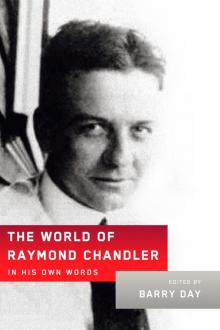 The World of Raymond Chandler: In His Own Words
The World of Raymond Chandler: In His Own Words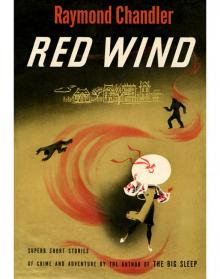 Red Wind: A Collection of Short Stories
Red Wind: A Collection of Short Stories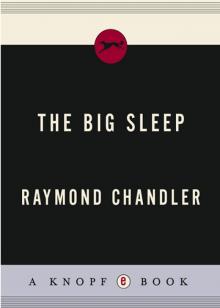 The Big Sleep
The Big Sleep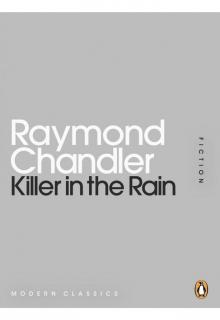 Killer in the Rain
Killer in the Rain Playback
Playback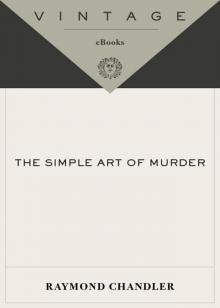 The Simple Art of Murder
The Simple Art of Murder The Bronze Door
The Bronze Door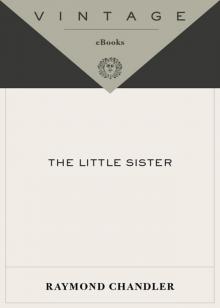 The Little Sister
The Little Sister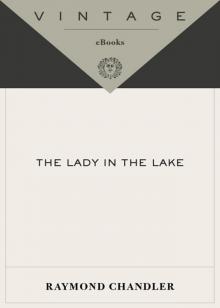 The Lady in the Lake
The Lady in the Lake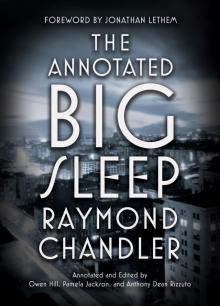 The Annotated Big Sleep
The Annotated Big Sleep The Collected Raymond Chandler
The Collected Raymond Chandler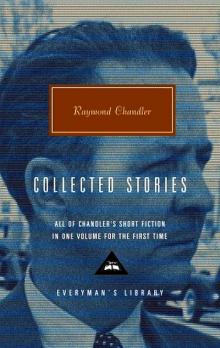 Collected Stories (Everyman's Library)
Collected Stories (Everyman's Library)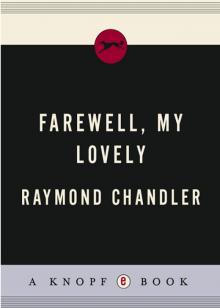 Farewell, My Lovely
Farewell, My Lovely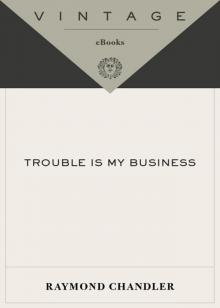 Trouble Is My Business
Trouble Is My Business The Long Goodbye
The Long Goodbye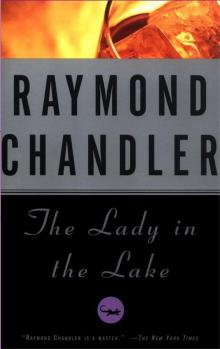 The Lady in the Lake pm-4
The Lady in the Lake pm-4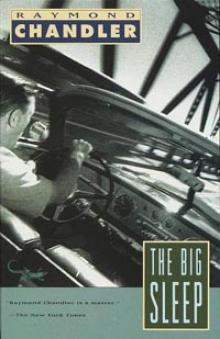 The Big Sleep pm-1
The Big Sleep pm-1 The World of Raymond Chandler
The World of Raymond Chandler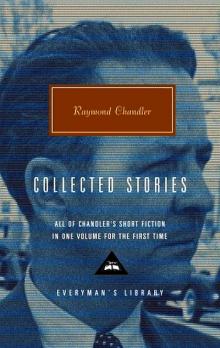 Collected Stories of Raymond Chandler
Collected Stories of Raymond Chandler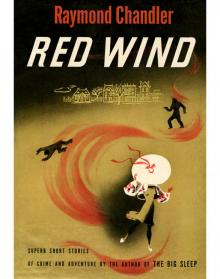 Red Wind
Red Wind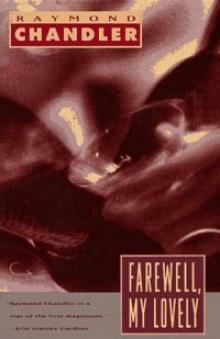 Farewell, My Lovely pm-2
Farewell, My Lovely pm-2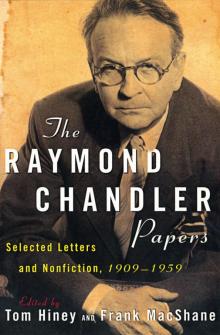 The Raymond Chandler Papers: Selected Letters and Nonfiction, 1909–1959
The Raymond Chandler Papers: Selected Letters and Nonfiction, 1909–1959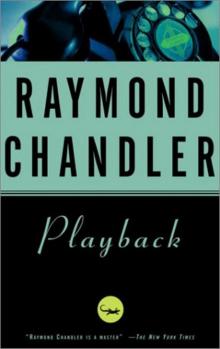 Playback pm-7
Playback pm-7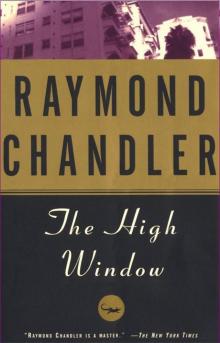 The High Window pm-3
The High Window pm-3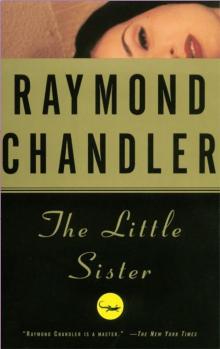 The Little Sister pm-5
The Little Sister pm-5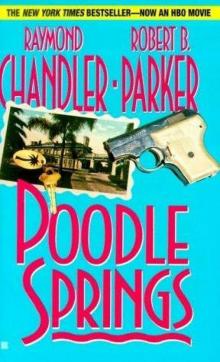 Poodle Springs (philip marlowe)
Poodle Springs (philip marlowe)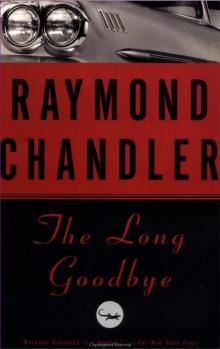 The Long Goodbye pm-6
The Long Goodbye pm-6